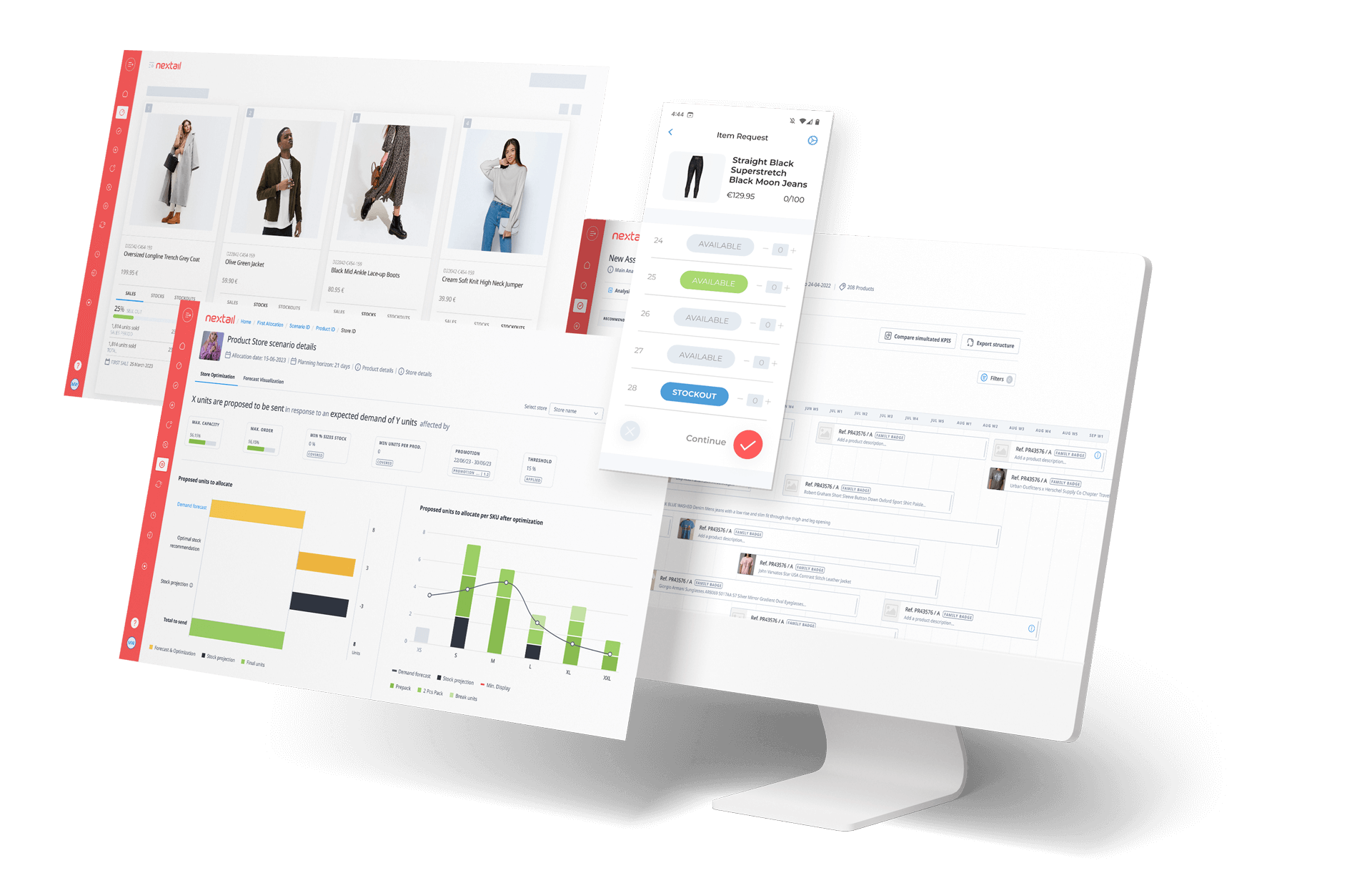Digitization done right delivers seamless, personalized omnichannel experiences | AWWG Q&A
A change in organizational mindset and strong partnerships with tech partners will foster the adoption of digitization, according to former AWWG CRO Javier Figar.
In this Q&A, Nextail spoke with Javier Figar, former CRO of All We Wear Group (AWWG) which is home to renowned brands Pepe Jeans London, Hackett and Façonnable, and the licensed distributor for Tommy Hilfiger and Calvin Klein in Spain and Portugal.
To ensure that the omnichannel experience will become ever more seamless, Figar recommends retailers adopt a fundamental change in mindset and seek guidance and strong partnerships with tech partners.
See more insights from “The Big Debate” roundtable of experts including Jan Heere, ex-CEO Studio Moderna; Gita North, Partner at First Friday, and more.
How will retail look in 3 years’ time versus today?
I anticipate three key changes in how retail will look in 2025.
Firstly, the customer journey between online and offline channels will be more seamless than it is today. AWWG brands have already started on that omnichannel journey, and will continue to evolve to provide a better customer experience.
Secondly, businesses will also adopt a more analytical and personalized approach to customers. In our case, our online segment has allowed us to peek into a number of metrics and gather a level of intelligence around customers. In the offline channel, we have taken some steps in that direction and it will become an even more critical part of how we approach business.
Thirdly, brick and mortar stores will exist more as a space dedicated to service and experiences. In the physical world, experiences and emotions are more pertinent. Stores make customers feel valued and that can’t be obtained digitally. There will still be a transactional element in-store but it will not be the only priority and will likely be finalized through a different set of processes such as show-rooming, where shoppers examine merchandise in-store but then buy online.
How must retail businesses change to future proof for 2025?
Even when a company is committed to digitalization as a key factor for for growth, a change in mindset is critical to making this happen. And that must span the entire organization – from the company HQ to stores, where it is most complicated due to established processes.
Digitization is also much slower than media reports. We are starting to understand and know what the future is going to look like but it’s still a bit blurry – it’s easier to think about it than execute it.
Even the most data-driven retailers in the world like Amazon, who are all about digital knowledge and intelligence, haven’t cracked the code. I recently bought some headphones on Amazon and for the following three weeks was targeted daily with new headphone sets – totally irrelevant to me. If a player like Amazon has not figured out some of these things, it’s far from a perfect world where all the connections flow in.
Sometimes this means decelerating the adoption of new solutions in retail networks to ensure the proper engagement of employees and generate a change mindset to ensure the technology is used in the right way and derives the most benefit.
By the same token, shoppers need guidance towards new retail tech. For example, we trialled the removal of till points in a number of stores, replacing them with moveable tablets. While the intention was to make the customer experience frictionless, it created unexpected challenges. Consumers wanted the till point – the move to a tablet didn’t feel natural or aligned with their ordinary customer journey.
And of course, delivering the benefits of new tech requires an agile and dynamic logistics chain. While new technology can certainly help pinpoint trends and new market opportunities, retail business must be underpinned by a strong and flexible logistical framework in order to support that new demand.
What tech advances could bring value to retail in the future?
Future support could be developed through closer connections to the shopper and the wholesale networks. For the former, providing consumers with more accurate information as to where the stock sits could be beneficial. For the latter, connecting with parties that have stock – we deal with a multitude of wholesalers across a vast store footprint – would help to streamline operations. If we struggle to be ready logistically, it’s a lot more complicated when it’s a third party and smaller player.
From a sustainability perspective, tech can also help retailers ensure that they have the right stock in the right locations and that it is smartly managed to reduce waste. And greater visibility over a product’s origins (i.e. where it was produced) is a longer-term goal, but it is a trend that is speeding up.
We put a lot of effort into developing sustainable capabilities. Not just because the customer wants it but because it’s the right thing to do.
More insights from “The Big Debate” roundtable of experts including Carlos Abellán, Data Analytics & Transformation Director at TENDAM; Charlotte Kula-Przezwanski, Partner at Columbus Consulting, and more.



